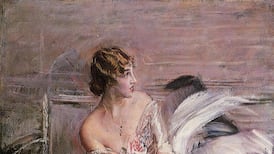Glenveagh Castle is arguably Donegal’s most famous landmark, however the architectural splendour of its Scottish baronial exterior belies a much darker history. In July 1933, the castle’s owner, American professor of architecture Arthur Kingsley Porter disappeared without a trace on the nearby island of Inishbofin near Magheraroarty.
It is a mystery which endured now for the best part of a century and no definitive answer has ever been found as to what exactly happened to Kingsley as he was affectionately known by his family.
Porter and his wife Lucy, a wealthy heiress, bought Glenveagh Castle in 1929 from the controversial Captain John George Adair. Adair was despised by locals in Donegal due to his role in the Derryveagh evictions of 1861, where the clearing of his estate of its 224 tenants in the wake of the Great Famine left an indelible mark on the local population.
Indeed, it was said locally that Glenveagh itself was cursed as a result.
READ MORE
Arthur Kingsley Porter was a much different man from Adair. In the United States, he was widely admired as an eminent archaeologist, art historian and Medievalist. His published work on ancient pilgrim roads and early Christian high crosses drew him to Ireland, first to lecture in the Society for Irish Antiquities in Dublin and eventually to Glenveagh.
Lucy and Kingsley wished to live like local people and eventually they built a small two-bedroom cottage on the small island of Inishbofin located between the coast in Magheraroarty and Tory Island.
Porter was fascinated by the local people and wrote plays and poetry while on the island. He fell in love with Inishbofin and wrote of it in his diaries: “We who live inland know nothing of islands, we never know what the sea is like with its spaces, its storms, its sadness, its exultation. We have never felt its wild winds sweeping unbroken from the rim of the world. We know nothing of islands.”
Porter also had particular fascination with St Colmcille who is closely associated with nearby Gartan. However, all was not as it seemed as the Porters were carrying a dark secret with them.
Kingsley Porter was struggling with his sexuality and suffered from episodes of depression as a result. In an effort to address the cause of his depressive episodes, the Porters visited the English physician and sexologist Dr Havelock Ellis in London.
Ellis recommended that the Porters introduce a young homosexual man named Alan Campbell into their marriage in order to help Kingsley overcome his depressive episodes. Campbell posed at Harvard as Kingsley’s assistant and travelled with them to Glenveagh on occasion.
Sadly, Harvard in the 1930s was a dangerous place for gay men. Beginning in the early 1920’s Harvard University had begun a purge of homosexual members of faculty as well as students. Under university president Abbott Lawrence Lowell’s direction, an ad-hoc tribunal known as the “secret court” conducted more than 30 behind closed doors interviews with men who were suspected to be homosexual.
Eight students and an assistant professor were subsequently expelled or relinquished of their duties. Kingsley Porter’s relationship with Alan Campbell eventually came under scrutiny.
Campbell fled to San Francisco and the resulting pressure on campus, coupled with financial difficulties for the Porters caused them to flee to Donegal to escape what they believed was to be an impending national scandal.
Both Lucy and Kingsley made their way to Inishbofin in mid-July 1933. One evening during a storm on the island, the couple briefly parted in order for Kingsley to prepare his coracle for fishing the next day - he was never seen again.
An inquest was later held in Falcarragh, the first of its kind in Ireland without a body present where it emerged that Kinglsey had arranged for his estate to be left to Lucy in the weeks before his disappearance.
Locals also testified that Kingsley’s currach was missing from the island and that a large freight ship had passed by Inishbofin the night of his disappearance. Curiously, during the couple’s time living on the island, Kingsley had penned a play about Colmcille sailing on a coracle out to sea away from all his troubles.
Did Kingsley Porter escape to a new life away from his troubles? Was it a simple accident? Or did Kingsley tragically take his own life? Perhaps Adair’s curse indeed hung over Glenveagh, which was eventually sold to the Irish State.
Today, a prestigious architectural prize is awarded each year in Porter’s memory by Harvard University. On Inishbofin, the ruins of his old cottage still remain.















